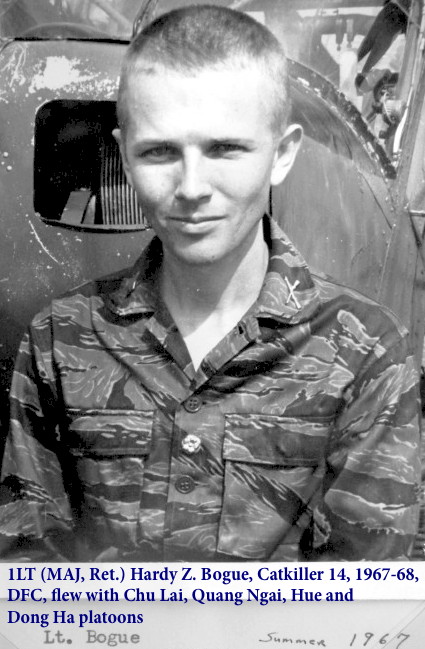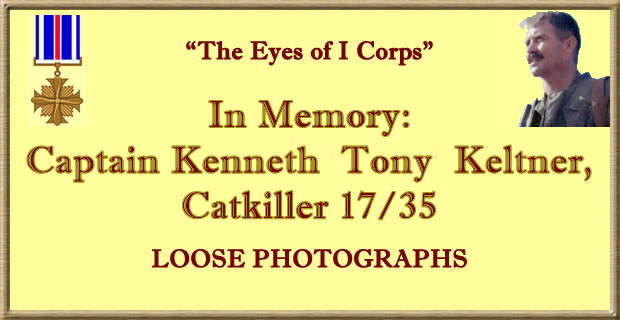
Arranged and edited by Donald M. Ricks, Editor
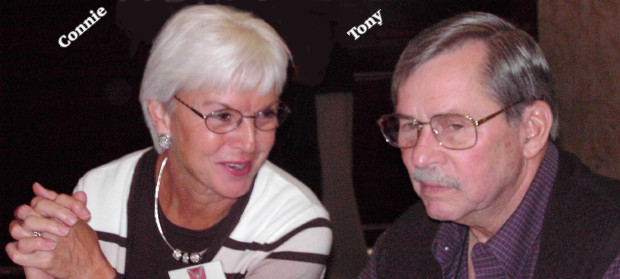
The Keltners at the Catkiller Reunion in Las Vegas
During March 2014, I had the honor of having lunch at the home of Catkiller 16 Rick Gates and his wife, Marsha. Also invited was Connie Keltner, widow of Tony. In addition to the good and filling food and pleasant conversation, Rick soon escorted us to his patio where we began to view photographs from his tour in Vietnam during 1970–71. The result of Rick’s determination to catalog all his many photos was a new history file soon thereafter added to the Catkiller History Index for 1971 and pertaining to Operation Lam Son 719. There are still many photographs on the shared computer disk (CD) from Rick, and some day I will add the best to the bottom of his generated history file.
To my surprise, Connie also offered a CD containing 58 photographs, plus a plastic bag of many other loose photos, some that did not pertain to Vietnam but provide insight into Tony’s service before Vietnam. These that follow below are the best of lot. An interesting discovery for me, personally, was that Tony once served in France and at an airbase where I had worked with the 97th Engineer Battalion during the early 1960s, Rozelier Army Airfield, Verdun, France. Probably, but not confirmed, Tony was with the 2nd Aviation Company and was at his departure from Europe a Specialist Sixth Class and a school trained helicopter and multi engine aircraft mechanic or technician. Tony also attended the prestigious 7th Army Noncommissioned Officer Academy at Bad Tolz, Germany. He served as an enlisted man from 5 February 1959 and arrived in France (USAREUR) 16 July 1959 and likely served a normal tour.
The 2nd Aviation Company (FW) (LT) was stationed at Verdun, France. The unit left France in March and April of 1967 when Charles De Gaulle forced the Americans out. Some of the assets of the unit, eight Otters, the ground equipment and most of the personnel that remained were sent to a provisional aviation unit that was being formed to support COMZ Europe when it moved from Orleans, France to Germany.
At its peak the 2nd had the headquarters, service and a fixed wing platoons in Verdun with a platoon in Orleans. A section of the Orleans platoon operated out of Poitiers. Operational missions covered all of Europe. From Spain, to England to Italy, to Scotland, Turkey, Greece, Belgium, France, and Sweden.
SOURCE: USAREUR Web Site
At some point Tony applied for Officer Candidate School (OCS), was accepted and graduated from Field Artillery OCS Class Number 9–66 at Fort Sill, Oklahoma, on 26 April 1966. After graduation from OCS he served briefly as an Executive Officer in Battery A, 3rd Howitzer Battalion, Fort Sill, and thereafter attended Officer Fixed Wing Aviator Course 67-7 and received his aviator’s wings on 6 June 1967. Tony’s assignment with the 220th Aviation Company began on 6 October 1967. He was assigned aviator duties until 5 July 1968 when he assumed the duties of Section Commander in his platoon. Tony departed Vietnam on 27 September 1968. His next assignment began in Germany as a fixed wing aviator with Headquarters, VII Corps Artillery (USAREUR).
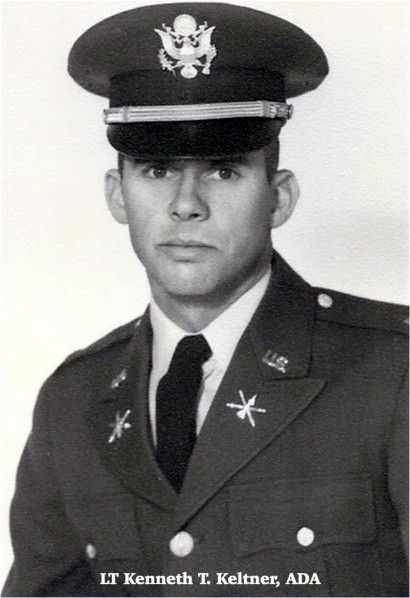
No wings, no awards, probably Tony’s commissioning photo
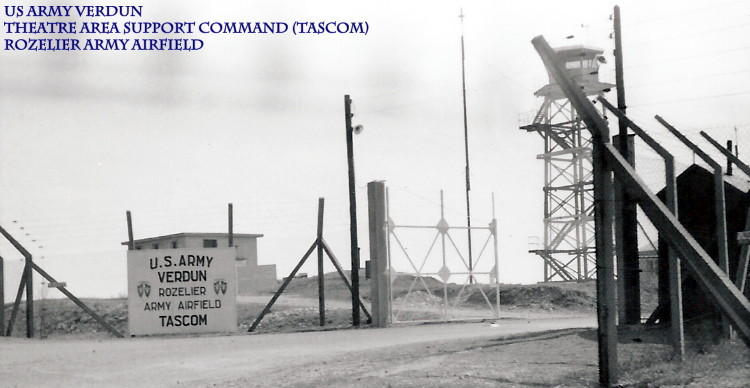
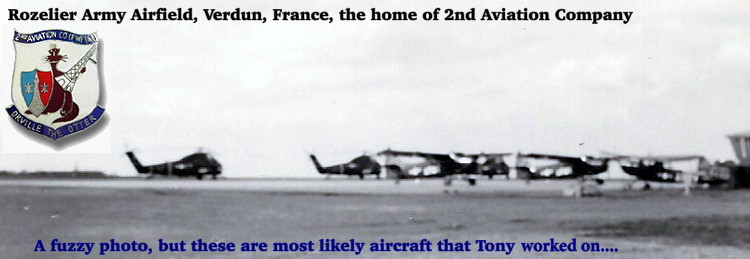
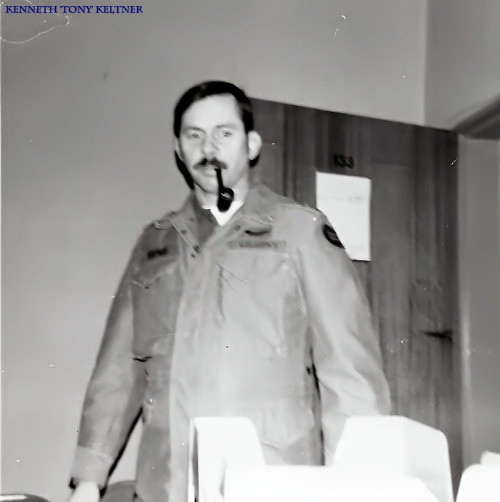
220th Aviation Company, Phu Bai, Vietnam
Available and credible roster documents show that Tony Keltner and Mike Sharkey both had a return to the United States date of 29 November 1968 (departed 27 November). Mike talks about him and Tony making a promise to return to China Beach after the war, so they probably arrived at the 220th Aviation Company at the same time, which would be approximately 6 October1967. The first photos with dates (Nov 1967) from Tony’s collection are typical new–guy photos of terrain, one of the company entrance sign and a Birddog (the terrain shots omitted here), followed by photographs of people and activities a soldier considers more important after the initial several weeks of combat experience.
Major (Retired) Kenneth T. Keltner, USA, was a well respected officer, aviator and man. Tony also retired from his second career at Redstone Arsenal, Huntsville, Alabama, just four months before his death on 13 August 2009:
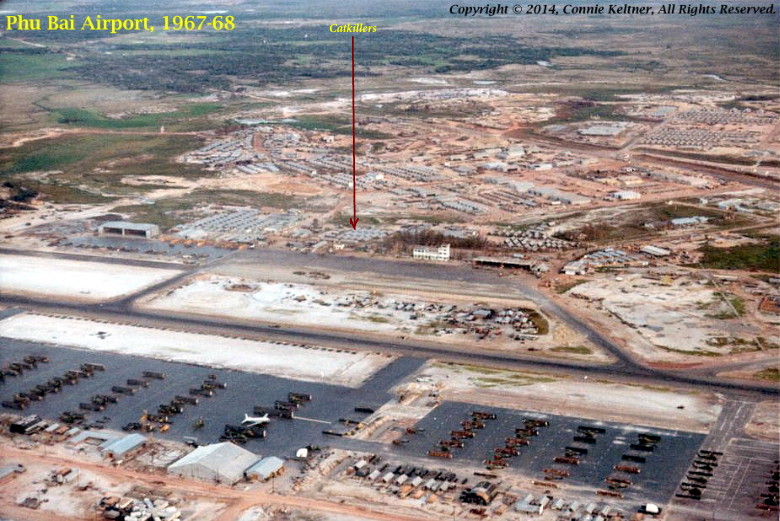
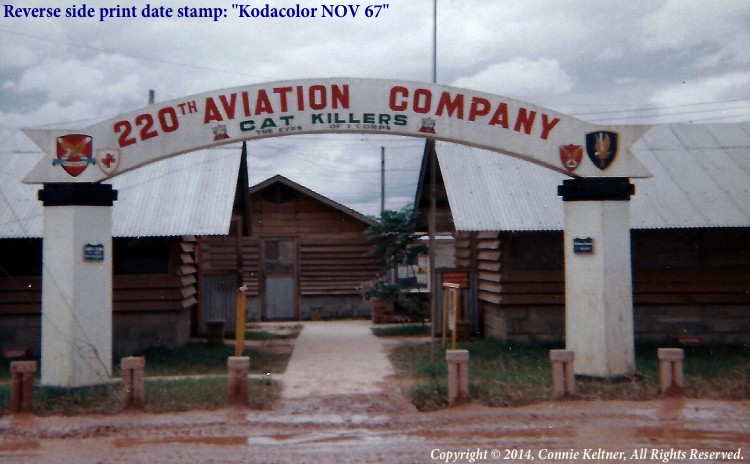
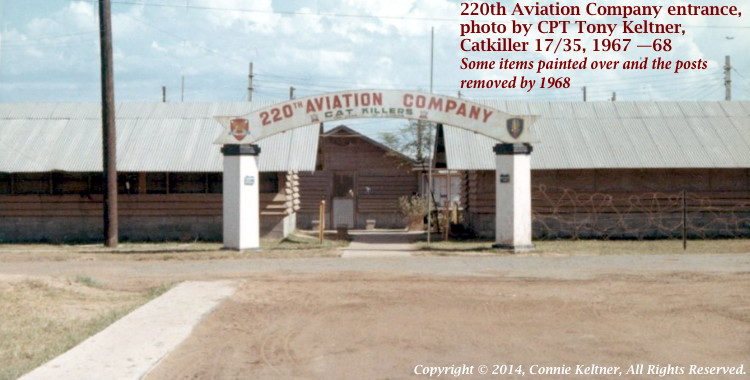
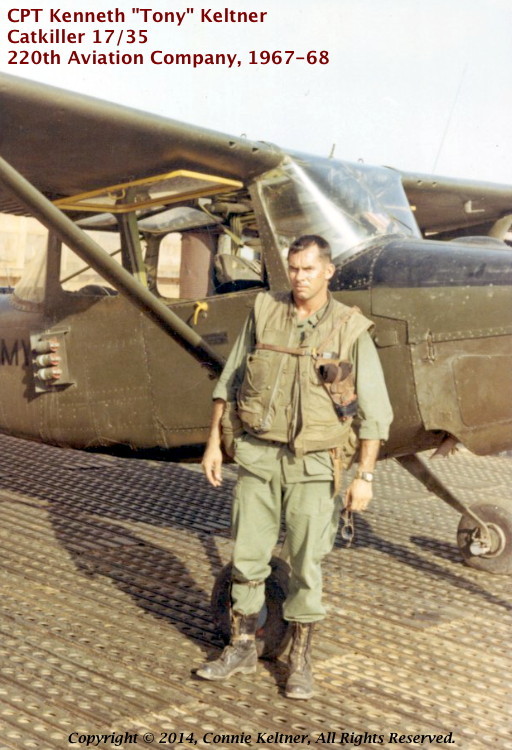
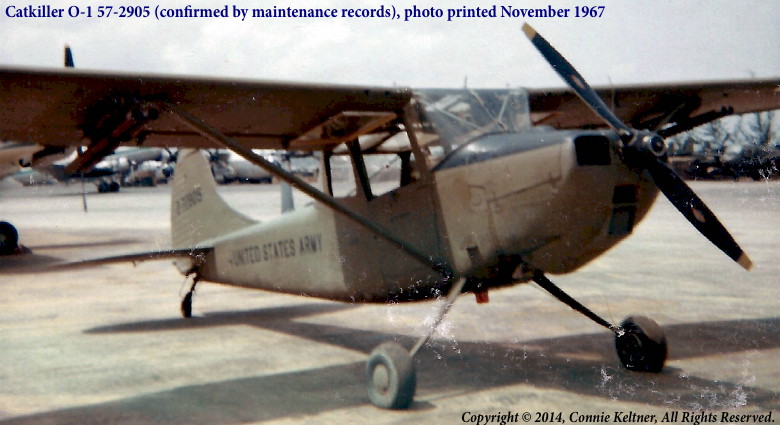
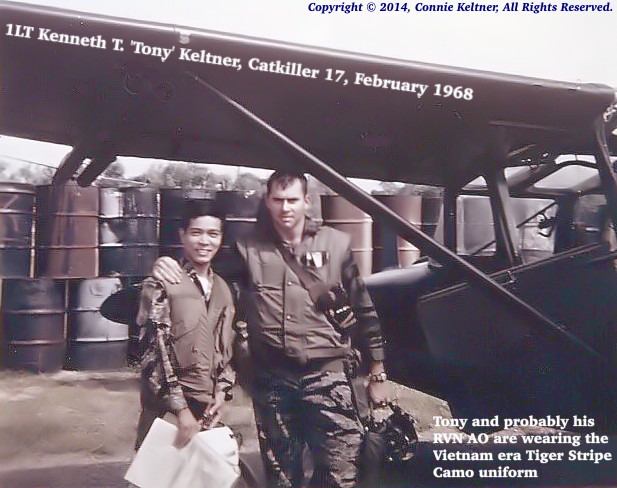
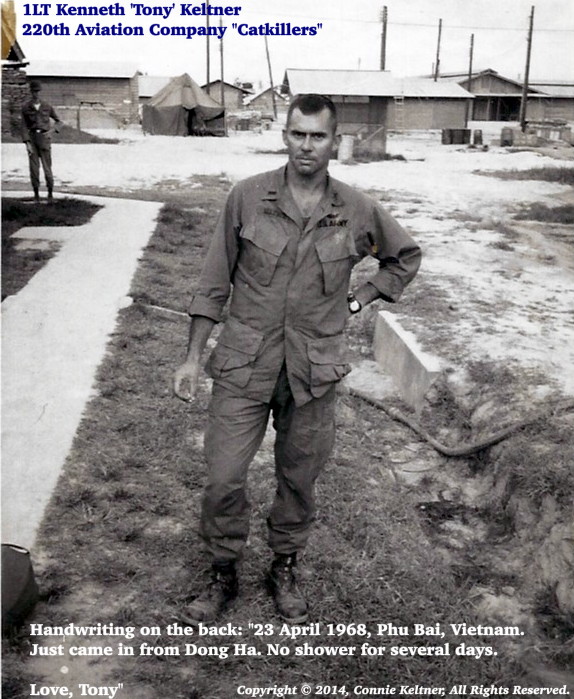
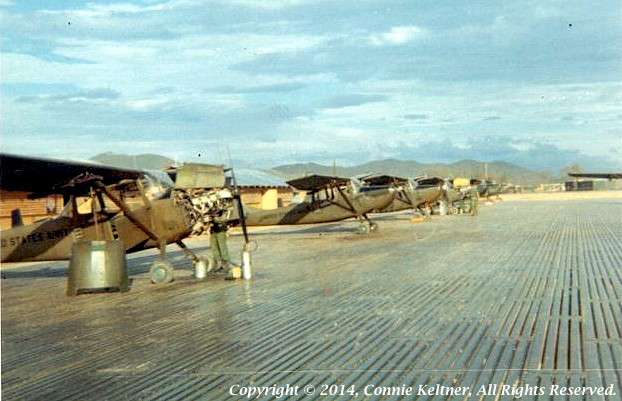
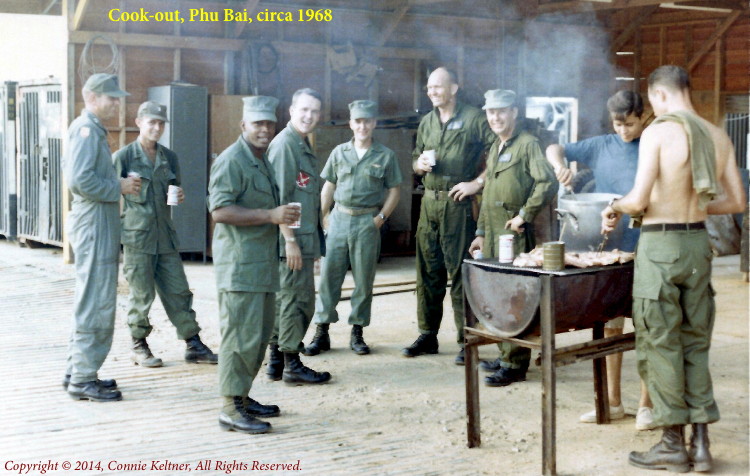
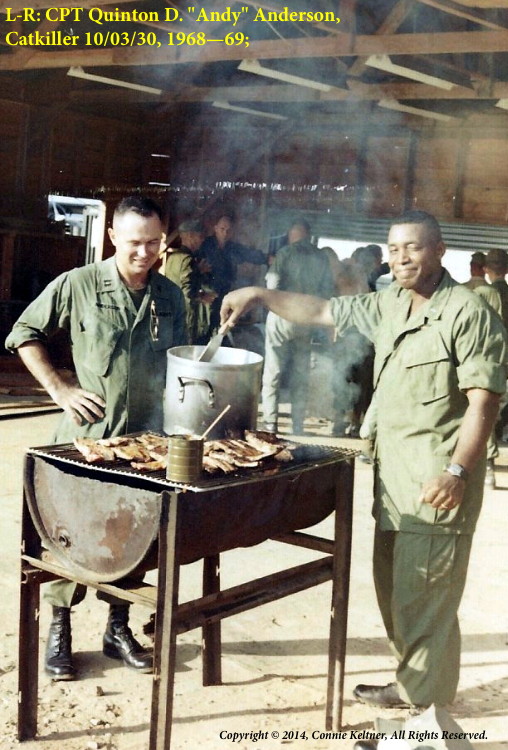
Photos with a print date of October 1968 but probably developed after DEROS:
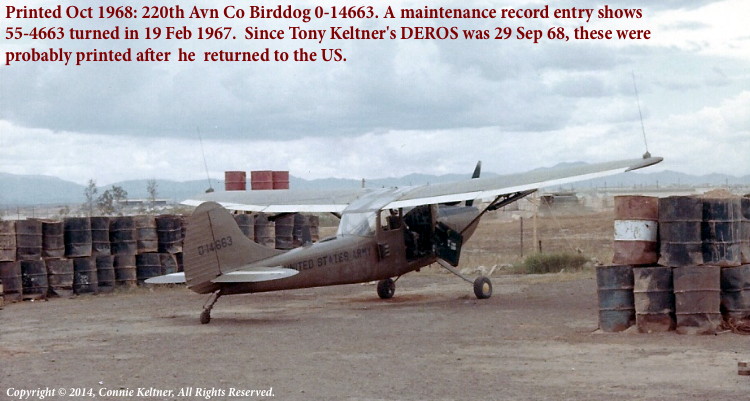
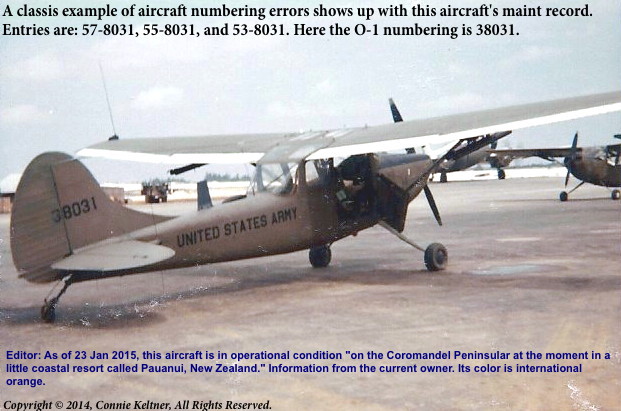
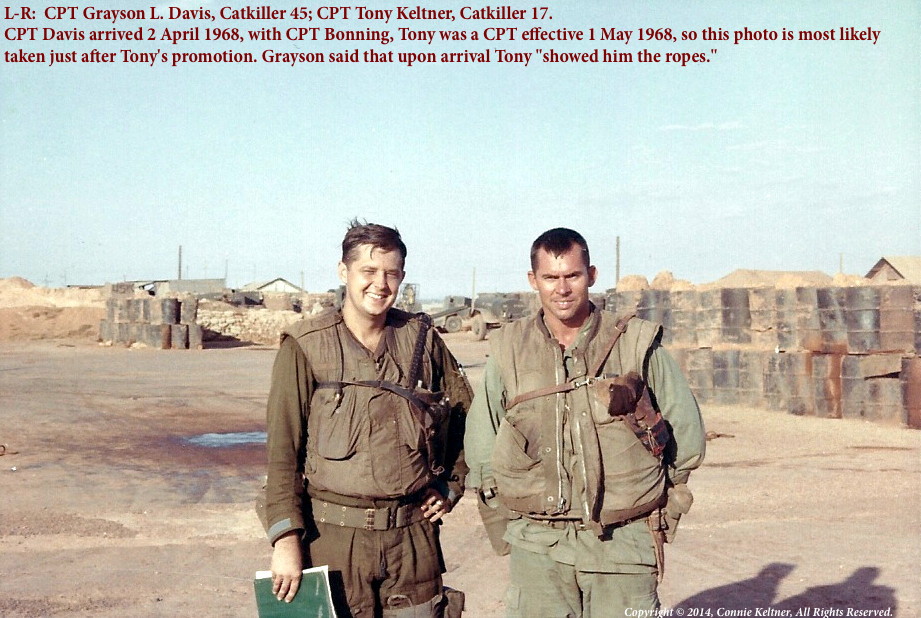
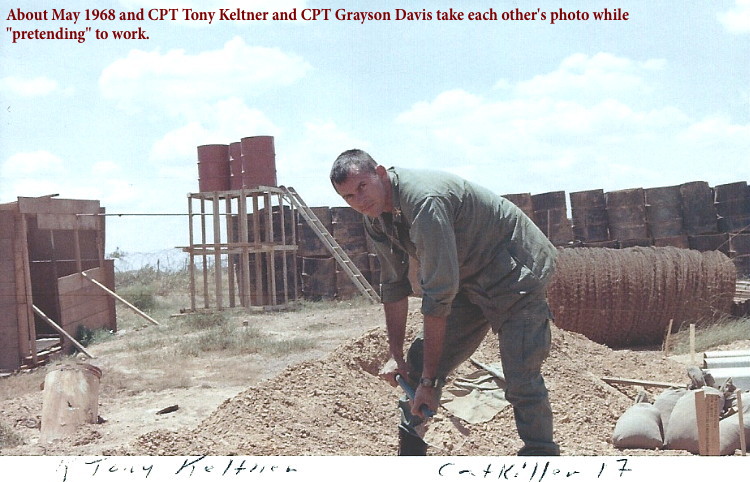
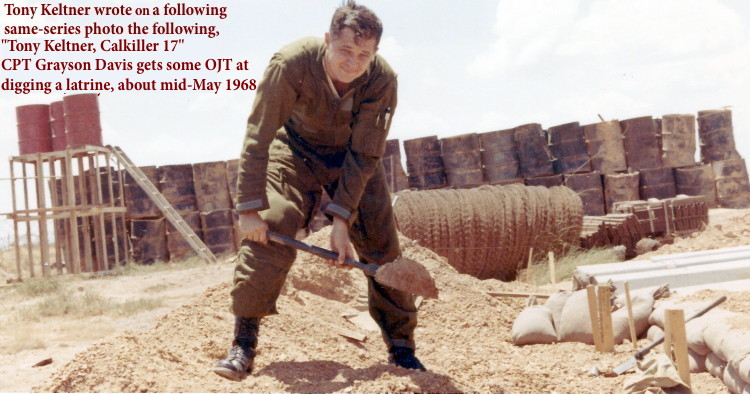
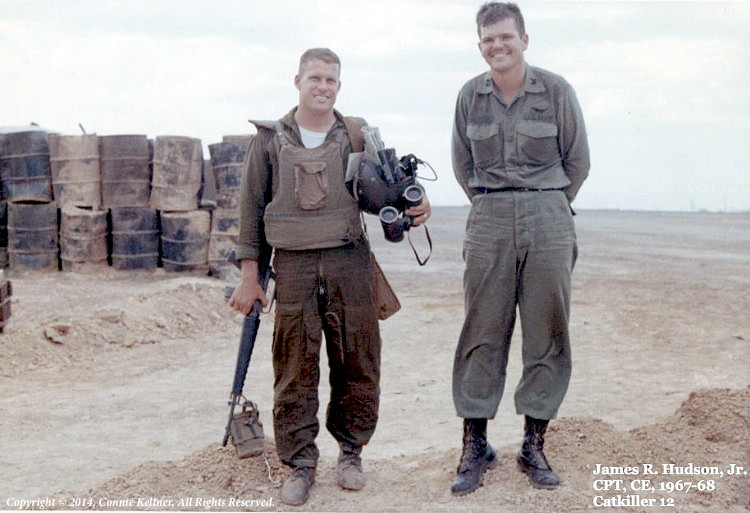
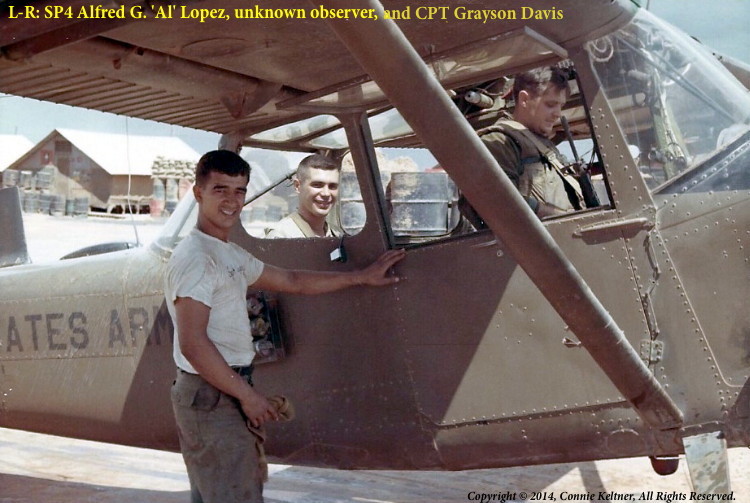
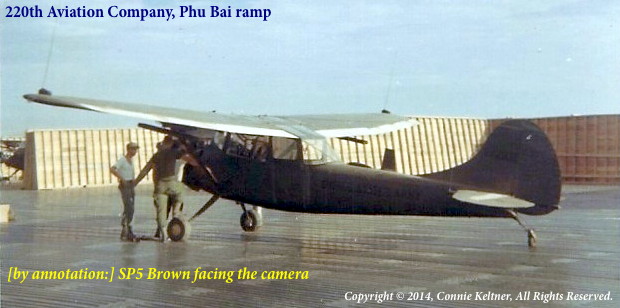
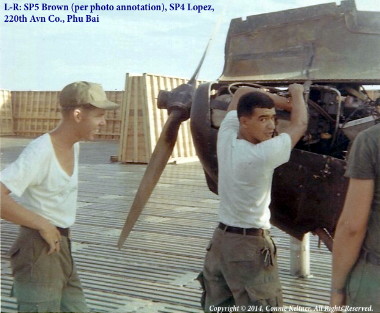
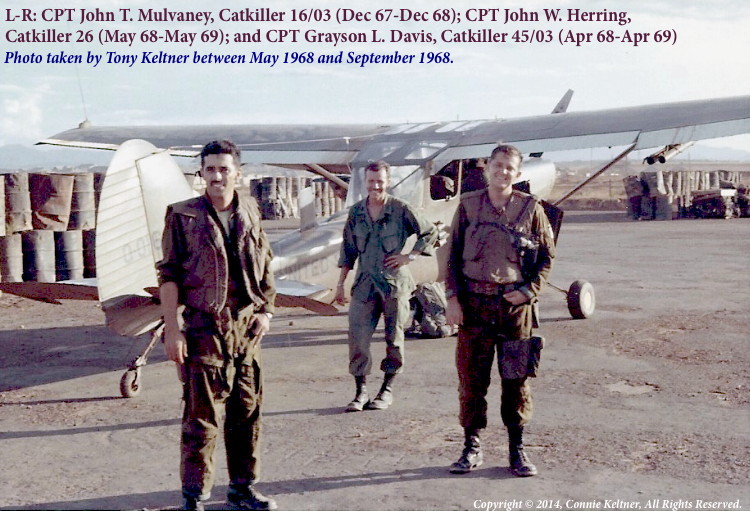
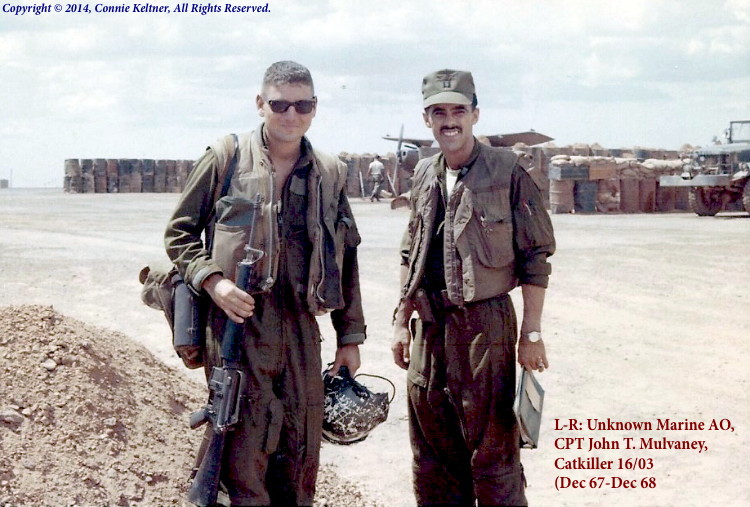
Photos with no date markings but excellent photography:
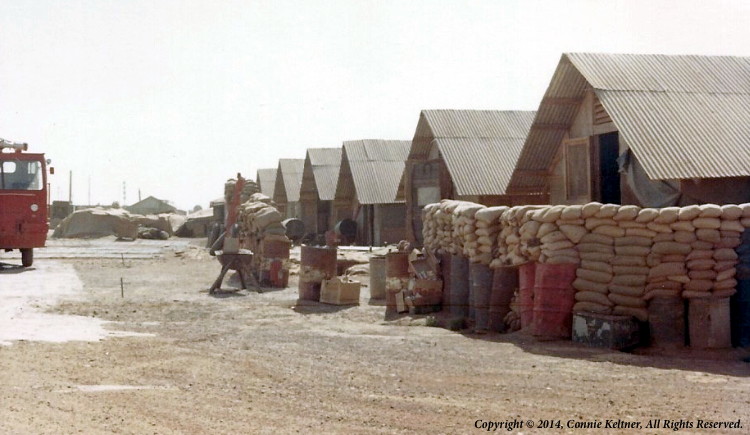
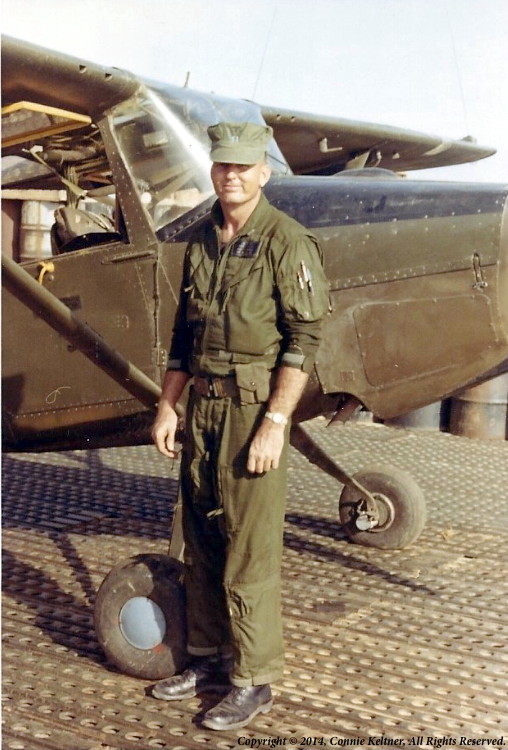
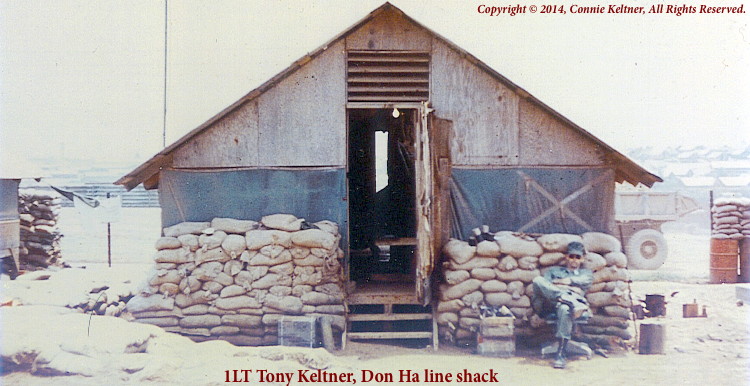
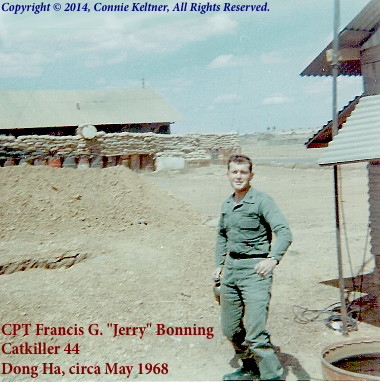
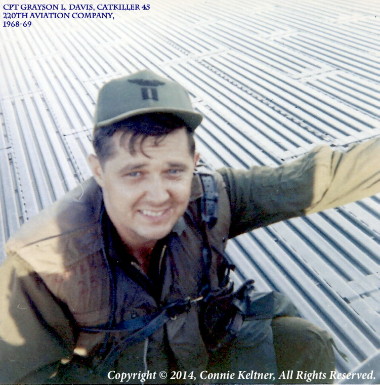
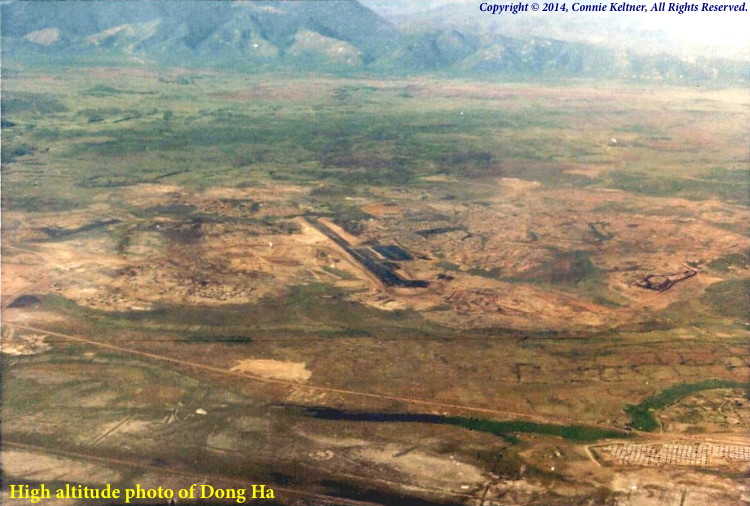
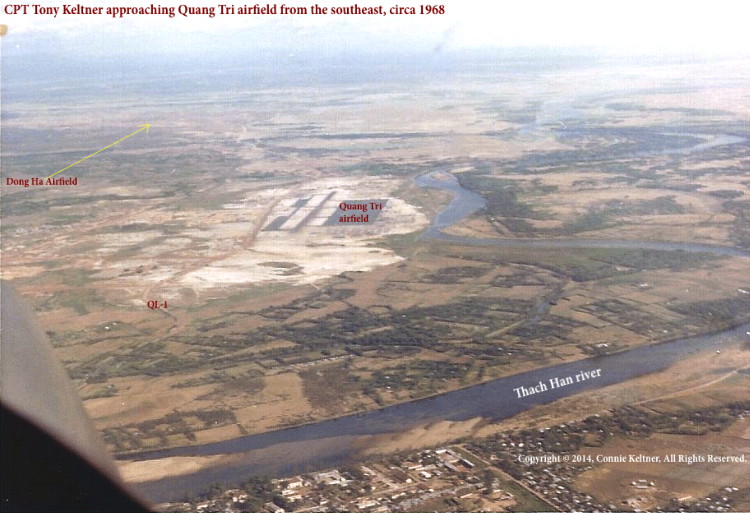
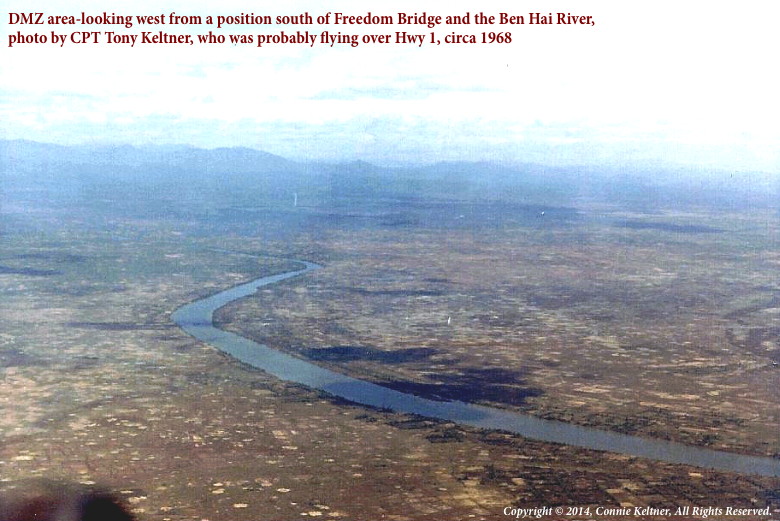
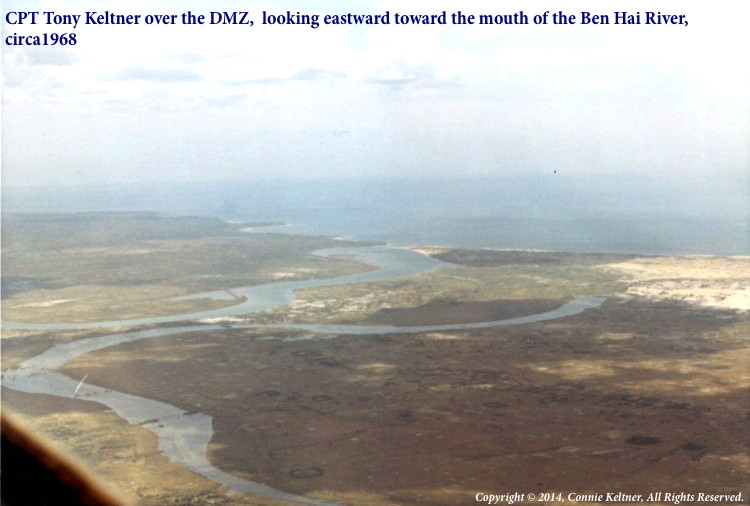
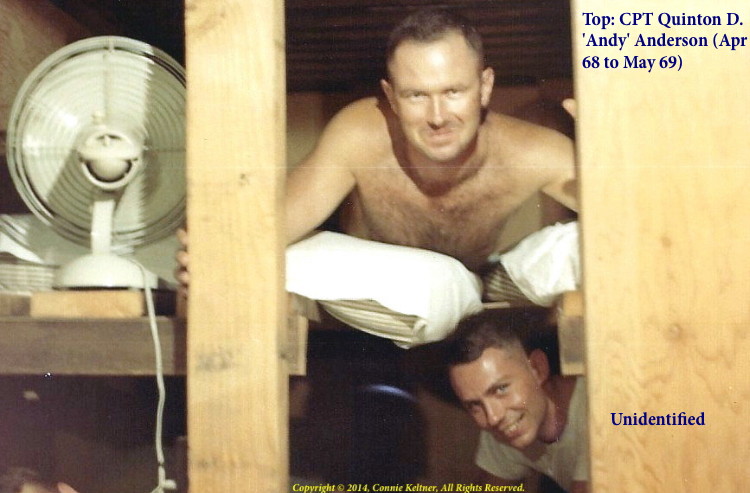
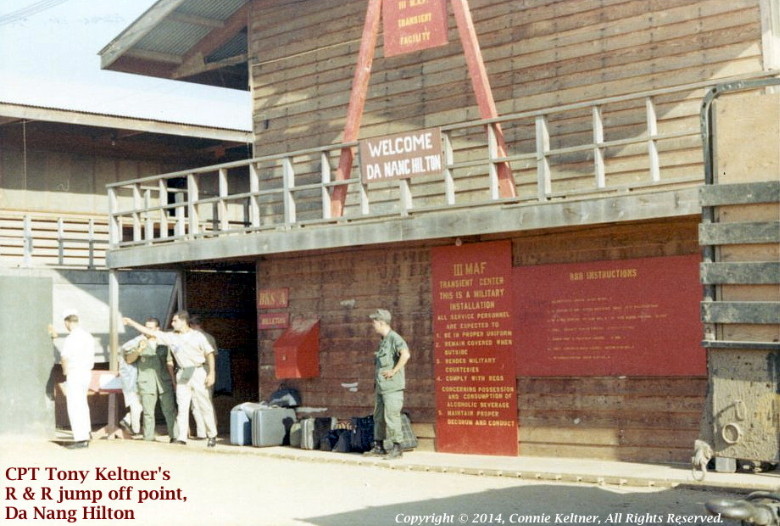
Comments:
WOW! What fond memories I have of Tony. He always had a slim wood–tipped cigar clamped between his teeth (I wouldn’t be surprised if that is what he has in his right hand in the “no shower“ photo) and a million dollar smile. He would receive cassette tapes from home and PRIVATELY play them on his little portable tape player. Tony and I had an interesting series of interactions in the late spring of 1968 when we were both flying the “DMZ.”
It all began when he relieved me on station one day when I was in the process of running fixed wing on two heavy machine gun emplacements (you remember them—the circular trench they dug resembles a donut). They were manned, but for some reason the NVA were tracking but not shooting at me (I guess they had sent “Snuffy“ off to get bullets). We managed to blow one of the emplacements away and then Tony came up to relieve me on station. I briefed him on what we were doing and told him that more jets were on the way to attack the other position, then returned to Dong Ha. Less than an hour later, Tony showed up with a couple of bullet holes in his aircraft, angry at me because I had told him that they were tracking us but not shooting. Dang, they hadn’t been shooting at ME—but that didn’t mean that they weren’t going to shoot at HIM.
The next incident occurred a week or so later when he relieved me up near the north edge of the Trace. We had been doing some VR for a company on a sweep and nothing much was going on. I briefed Tony and left. A couple of hours later Tony returned to Dong Ha with some AK–47 holes and again was angry with me for not telling him about the bad guys with AK–47’s. Well Hell, we ALL knew that the place was full of bad guys and we could get shot at just any old time—they simply hadn’t been shooting at me on that particular day. Maybe Tony had been cruising around real low and slow and the bad guys thought he was a nice, juicy target. Anyway, I just blew it off and started calling him “Magnet Ass.“
The third and final incident occurred a few days later when I had been cruising back and forth just south of the Ben Hai and the gomers started shooting flack at me. At first, we heard the explosions and wondered who was shooting arty up there because if WE weren’t doing it, then someone should have warned us. We made some radio calls and ascertained that the explosions we were hearing were not friendly. About that time I had reached the mouth of the Ben Hai and did a 180 to head back east. That’s when I saw the puffs of black smoke that had been tracking along behind me as I was headed west. I immediately turned south and it stopped. I then gradually crept back north, still heading east and the explosions began again. They were going off behind and above me as though the bad guys couldn’t depress their guns far enough and were trying to figure out how far to lead me. This seemed like vital information to me and we reported it to the DASC as well as giving Tony a full verbal run down over the radio when he relieved me a short time later. Well, here we go again—about an hour later, here comes Tony back to Dong Ha with the rear window of his Birddog shot out (no injuries), mad as hell at me because they had nailed him with flack.
“Damn you Caryl, they shot the heck out of me and I’m never going to relieve you on station again!“
I just laughed—and he NEVER did.
I will tell you this though: Tony Keltner was one of the finest young men you could ever hope to know and serve with. By the time I saw him again at the Houston reunion all those years later, all was forgiven and we did share a few chuckles over our little “relief on station“ problem. May God bless and hold every one of our Catkiller brothers close to His heart, for we all served with honor and integrity protecting our Marines on the ground.
Ray Caryl [Catkiller 32/42, 1967–68]
I served in all four 220th platoons and donít remember any bunks like that [photo with Andy Anderson in what appears to be a built–in bunk]. The Tiger fatigues were issued to our platoon based in Quang Ngai by the 2d ARVN Division [referring to the photo of Tony in a Tiger stripe uniform with an RVN AO].
Hardy Bogue
